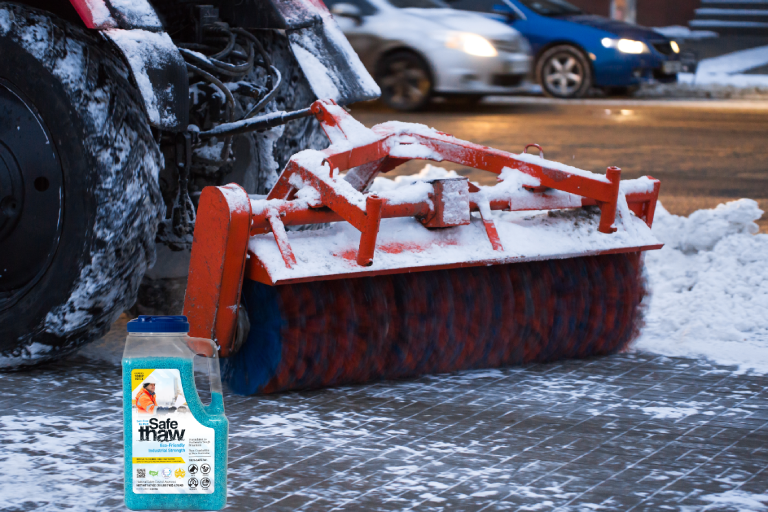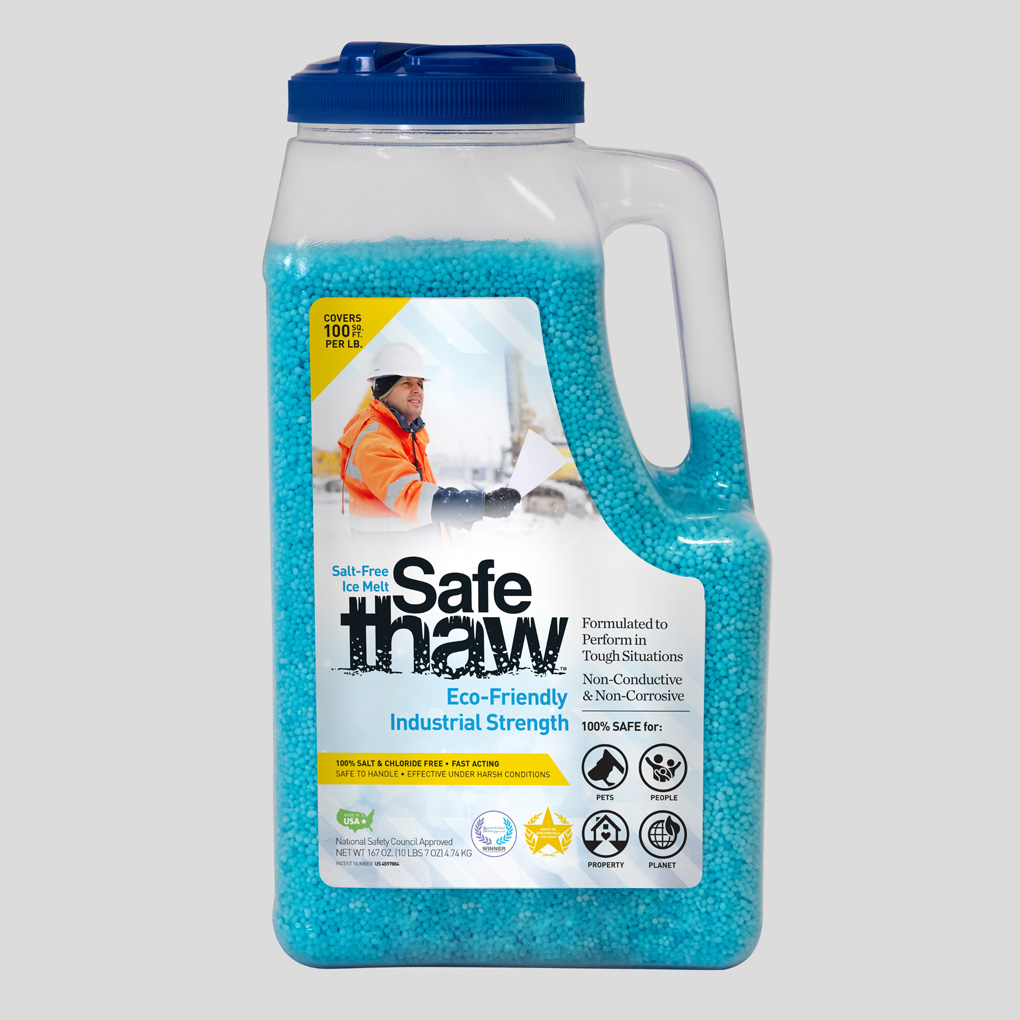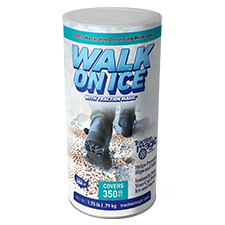How To Clean Oil From Concrete: A Step-By-Step Guide

An unwelcome oil stain on your concrete can feel like an unwanted blemish on an otherwise well-kept surface. But there’s no need for panic! This detailed guide offers you the expertise to clean oil from concrete, eliminating stubborn stains and reinstating your concrete’s clean aesthetic.
Tackling oil stains on concrete surfaces can seem intimidating. However, with the right techniques at hand, you can effectively clean oil from concrete, whether it’s a driveway, patio, or garage floor. The process may involve blotting the stain, scrubbing it vigorously, applying a degreaser, pressure washing, and repeating as necessary until the stain disappears.
Let’s first understand the root cause of these oil stains on concrete surfaces. After all, knowledge is power, right?

Safe Thaw
Safe Thaw was created as the ice management solution for tough winter environments. Ideal in commercial and industrial properties, shops, government agencies, bridges, and construction.
The Roots Of Oil Stains On Concrete Surfaces
Oil stains can sneak onto your concrete in many ways, from vehicle leaks to accidental spills. If left untreated, these stains don’t just mar the appearance of your concrete but can also impact its structural integrity. Here’s a closer look:
- Vehicle Leaks: Motor vehicles and machinery are common sources of oil stains. Engine oil, transmission fluid, and other lubricants can leak onto the concrete surface and leave behind stubborn stains. Regular checks for leaks and prompt repairs can prevent further staining.
- Accidental Spills: Activities like refueling or transferring fluids can lead to accidental oil spills. Quick action can prevent the oil from seeping into the porous concrete, resulting in persistent stains.
- Lack of Maintenance: Neglecting regular maintenance can contribute to oil stains on your concrete. Timely oil changes and replacement of worn-out parts can reduce the likelihood of oil stains.
- Environmental Conditions: Heavy rain, humidity, or excessive heat can facilitate oil penetration into concrete, making it more challenging to clean oil from concrete surfaces.
- Incorrect Cleaning Methods: Inappropriate cleaning techniques or products can worsen oil stains. Using harsh chemicals or abrasive cleaners can damage the concrete or spread the oil further. Thus, it’s essential to use suitable cleaning methods to effectively clean oil from concrete surfaces.
Cleaning Oil From Concrete: A Step-By-Step Guide
Here’s how you can banish those tough oil stains from your concrete surfaces:
- Absorb Excess Oil: Start by soaking up the excess oil using an absorbent material like cat litter, sawdust, or baking soda. Let it sit on the stain for about 30 minutes.
- Scrub The Stain: Prepare a solution of dish soap and hot water. Use a stiff-bristle brush to scrub the stained area vigorously, reapplying the solution and rinsing your brush frequently until you see the stain lightening.
- Apply A Degreaser: For stubborn stains, you may need a concrete degreaser. Apply it on the stain, let it sit for about 10-15 minutes to loosen the oil residue, and then scrub again.
- Pressure Wash: Rinse the area using a pressure washer. Keep the washer set at medium pressure to avoid damaging the concrete.
- Repeat As Necessary: If the stain still persists, repeat the above steps until your concrete surface is oil-free.
100% salt & chloride-free, fast acting Ice Management Solution
Potential Impacts Of Neglected Oil Stains
Ignoring oil stains can lead to discolouration, degradation of the concrete, slippery surfaces, environmental contamination, and an increased difficulty in future cleaning efforts.
Preventive Measures & Maintenance: Aiding Clean Concrete Surfaces
Keeping your concrete surfaces clean not only enhances its appearance but also ensures longevity. Here are some maintenance tips to help you in your quest for oil-free concrete:
- Regular Cleaning: Regularly sweep or blow away debris and dirt from your concrete surface.
- Sealing: Applying a high-quality concrete sealer every few years can protect your concrete from water penetration, stains, and freeze-thaw damage.
- Safe De-Icing: Avoid using salts or chemicals containing ammonium sulfate or nitrate as they can corrode and weaken the concrete over time. Instead, opt for a safe, eco-friendly and best ice melt like Safe Thaw.
- Crack Repair: Regularly check for cracks and repair them promptly using suitable filler or repair compound.
- Proper Drainage: Ensure the concrete surface has proper drainage to avoid water-induced damage.
In a nutshell, effectively cleaning oil from concrete is a straightforward process with the right approach and materials. Regular maintenance and the use of the best ice melt during winters can prevent oil stains and other damage, ensuring a clean and long-lasting concrete surface. Wave goodbye to oil stains and embrace your clean, oil-free environment!
Try Also Our Other Winter Safety Products:
Safe Paw
The Original and #1 Selling Pet and Child Safe Ice Melt for over 20 years. Guaranteed environmentally safe –It won’t harm animals or children, and it won’t damage your property. That’s Safe Paw. Safe Paw can change how winter affects our planet.

Walk On Ice
The handy disposable canister can be taken everywhere, with the same 100% naturally occurring minerals that provide instant traction on ice or snow. Use it on sidewalks, steps, or as an instant traction agent for your car.



